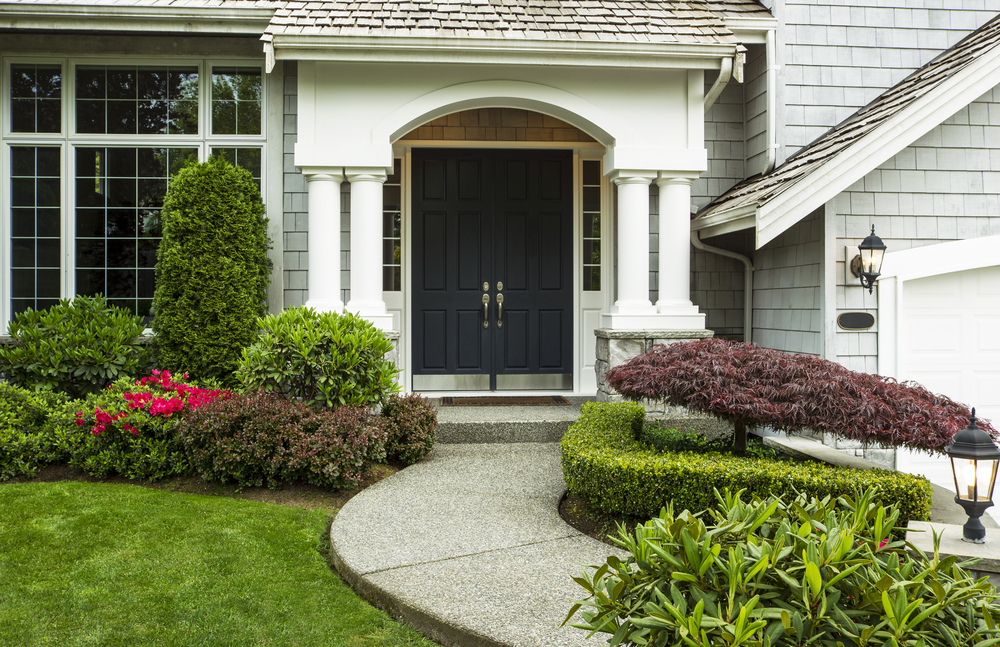

We may earn revenue from the products available on this page and participate in affiliate programs. Learn More ›
Many homes in warmer areas have beautiful doors that open outward to let the outside into their living spaces. Fresh breezes through open doors can make a home feel like a vacation spot all year. In other areas, where hurricane-force winds and other weather events make outward-swinging doors a safety necessity, their use is aimed at keeping the interior of the home safer from the elements. Unfortunately, they also present different security risks than inward-swinging doors do. On a positive note, they’re much more difficult to kick in than inward-swinging doors, but because their hinges are exposed, they have an additional point of vulnerability. These doors also have a larger hinge for criminals to use to pry the door open. Outward-opening doors are sometimes used inside a home to separate interior spaces; these doors may need to be secured, but they don’t have space for a traditional lock. If you’re wondering how to lock your door without a lock, there are several options, and you can even learn how to make a lock for your door using simple household items. Fortunately, there are steps a homeowner or renter can take to secure their outward-opening doors so they can enjoy their benefits while still keeping their home safe.
Before You Begin…
Inward-swinging doors have specific points of vulnerability. Because the door naturally swings into the home, any intruder who can put enough pressure on the lock, the frame, or the hinge area can shove the door into the house on its own hinges and gain entry to the home. While outward-opening doors are safer from this kind of forced entry, the fact that their hinges are exposed to the exterior is a significant risk. If you’ve ever removed an interior door in your home, you know it’s a simple matter of popping out the hinge pins and lifting the doors off the hinges. Because of this, extra attention needs to be paid to the hinge and locking mechanism to secure the outward-opening door in place. While there are barricade and security bar options, these tools need to secure the door from opening out, not in, so the best door security bars or floor barricade won’t be as effective—a different type of exterior bar is required, and barricades will be installed differently. Luckily, these tools do exist, but homeowners may have to hunt a little harder to find them.
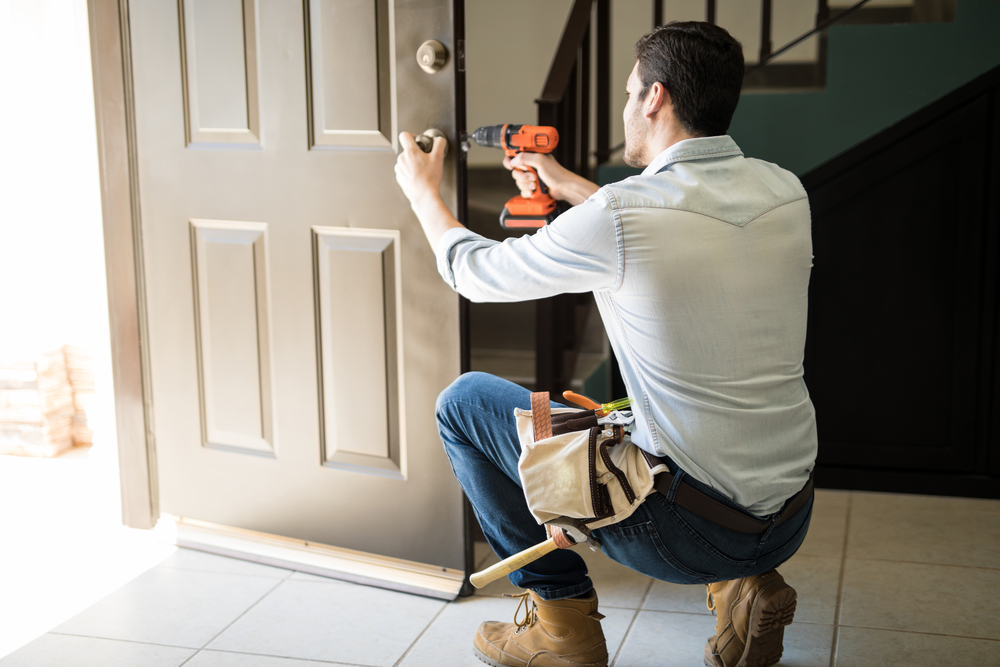
The conventional wisdom about door security still applies, regardless of the direction of the door’s swing. Making sure that the door itself is solid and strong, ensuring that you’re using a strong deadbolt, choosing good exterior lighting, clearing landscaping from the entryway to avoid providing good hiding spots, choosing a great home security company, and even leaving a pair of old boots on the doorstep will all add layers of security around the additional measures you can take to solidify what’s standing between the criminals and your home and family.
STEP 1: Secure and reinforce the hinges.
For residents who have never adjusted or installed them, hinges can be a bit of a mystery. Most of the time, people only pay attention to them when they squeak or are loose and prevent the door from swinging properly. Home intruders understand that the hinges, especially exterior hinges, are a great way to get into a locked space. By loosening the pin and popping it out, an intruder can simply lift the door off the hinges, shimmy it sideways to remove the deadbolt, set it aside, and enter the home. For many people, the most complex part of working on hinges is getting past the assumption that they’re tricky to work with.
There are several ways to reinforce the hinges. First, consider replacing the hinges with nonremovable hinges. These hinges have a pin that can’t be removed, even by force, which prevents an intruder from building enough space to lift the door. A second option is to install security stud hinges. These look like traditional hinges, but one side has a flange that fits into a hole on the other side when the hinge is closed, preventing the door from being lifted off the hinge. The door can only be lifted when it is fully open, which will disengage the flange. Set screw hinges have a small screw on the hinge pin that secures it in place unless the screw is removed. The trick is that the screw is only accessible when the door is fully open. All of these options require double-checking the size of the existing hinges and the pattern of the screw holes to make sure the replacements will fit neatly into the space left by the previous hinge; fortunately, most hinge manufacturers use a fairly standardized size and pattern.

For those who aren’t comfortable replacing their hinges, there’s another option. Door hinge security pins are designed to function similarly to security stud hinges, but they require only one screw on the door side of the hinge to be removed and replaced with the security pin. The homeowner will then drill a small hole in the corresponding screw hole on the frame side of the hinge for the pin to fit into when the door is closed, and the door will no longer be able to be lifted off the hinge when the door is closed.
STEP 2: Install a latch guard.
Another easy way to get through an outward-swinging door is to tamper with the door’s latch. The latch is more accessible on an outward-swinging door because it’s not tucked behind the door frame like it is on an inward-swinging door, and is instead accessible through a small gap between the door and the frame. To protect against this, homeowners can install a latch guard on their door. A latch guard is a slim metal plate that attaches to the outside of the door and extends slightly over the frame, covering the gap and eliminating a criminal’s access to the latch. Latch guards are quick to install and come in a wide range of colors and finishes to complement the door’s style.
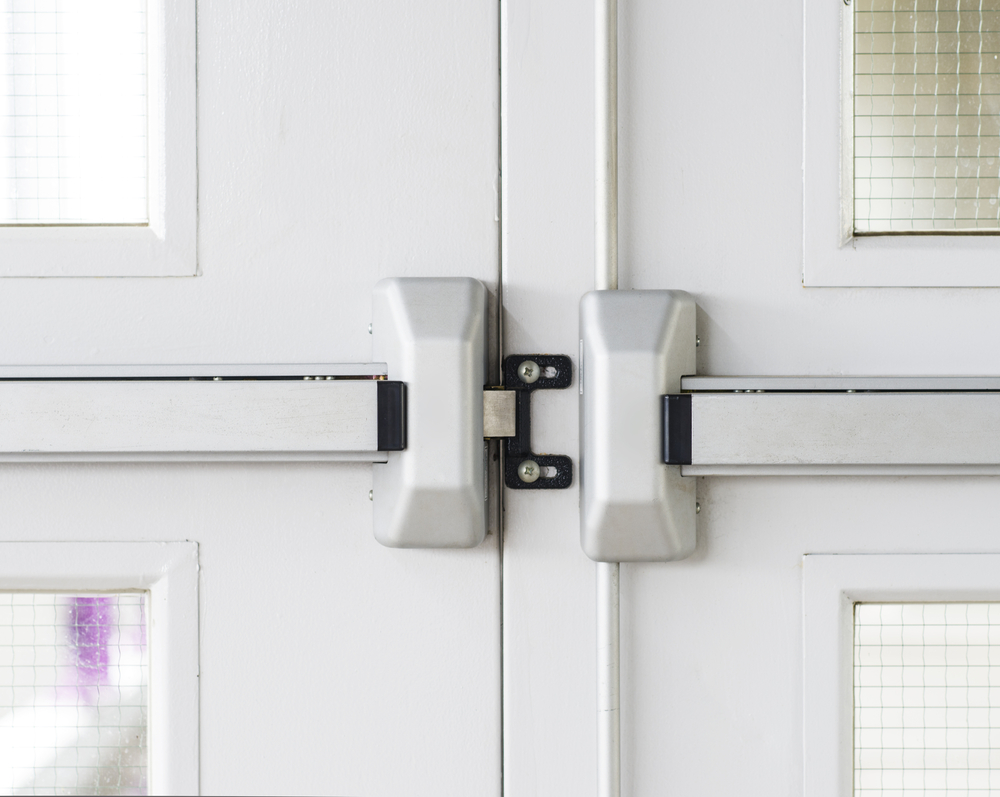
STEP 3: Use a door barricade.
A strong but subtle security option is to learn how to barricade a door by installing a three-part door barricade tool, which allows the door to fasten to a plate screwed into the floor with a locking arm, preventing it from opening. Many of the door barricades on the market are designed for inward-swinging doors; they prevent the door from being pushed past the barricade. Those designed for outward-swinging doors have three components: a plate that screws into the door near the bottom, a plate that screws into the floor, and an arm that is secured to the door plate and drops into the floor plate. These are extremely strong locks; some can withstand up to 1,100 pounds of force, so if an intruder wants to get in they’ll have to physically break the door or find another way inside. One consideration when installing a barricade is that the drop to the floor plate can be as much as ¾-inch thick, so some consideration needs to be given to the placement and the clearance between the floor and the bottom of the door. For renters who may be uncomfortable drilling into the floor, there is a commercial version of this type of lock that doesn’t require damaging the floor. It’s designed to be used in dorm rooms, churches, and other larger applications, but it’s also suitable for renters to use to secure an outward-swinging door without forfeiting their security deposit. This is often the best way to secure a door from the inside.
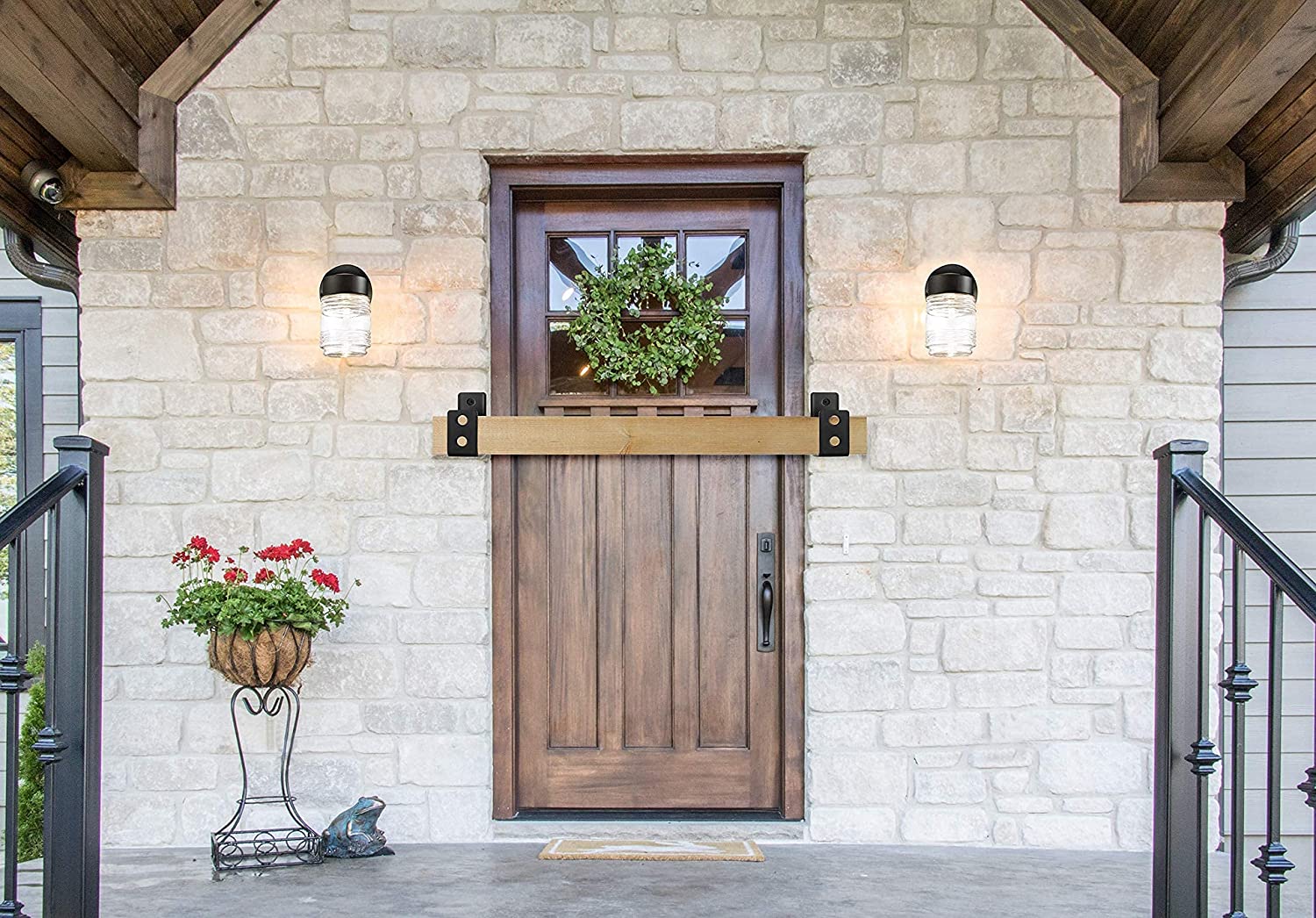
STEP 4: Install a door security bar.
There are plenty of security bars on the market for inward-swinging doors, but an outward-swing door security bar is another extremely strong option to add security to the home. Essentially, this tool is a set of two bars and two linking pins. One bar is secured to the door itself with heavy-duty screws. The link pins are threaded through the second bar, which is wider than the door frame, then hooked into the bar that’s affixed to the door. As the pins are tightened, the two bars are drawn tightly together until the inner bar is pulled firmly against the door frame. Once tightened, the door can’t be opened without ripping the bars through the frame—a degree of force that would draw a lot of attention to the attempted break-in, and most intruders would prefer not to draw attention to themselves.
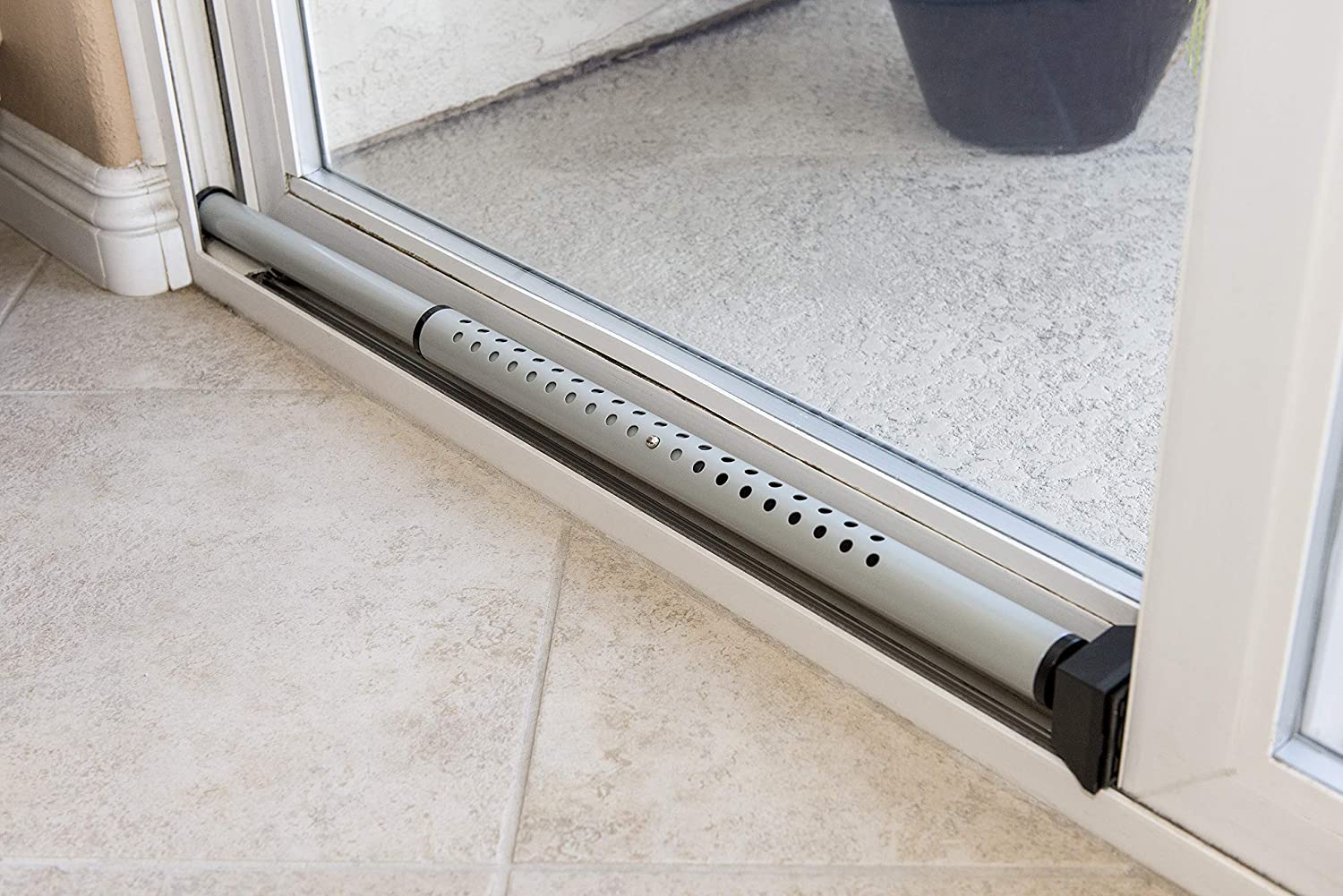
Wondering how to lock a door without a lock? A neat trick for those who need a short-term fix, or for use during travel, is to use a broomstick or other solid piece of wood or metal. This can be fashioned into a DIY door lock with some rope or string and a roll of duct tape. Place the broomstick across the door frame just above the height of the doorknob and tape it securely to the frame of the door (note that the duct tape may damage the finish on the door frame when removed). Once secured, tie or loop the rope around the broomstick handle, then tie it to the doorknob, using a figure-8 pattern to connect the stick and the doorknob firmly together. This solution will only be as strong as the piece of wood or metal used as the bar and the structural integrity of the doorknob, but it will likely offer enough resistance that an intruder may give up and move on to another target.
STEP 5: Tie the doorknob or handle to a heavy object or piece of furniture.
Another do-it-yourself door lock option for outward-swinging doors requires only a strong tether and a piece of heavy furniture (and a strong doorknob). Simply use the tether—rope, power cable, coaxial cable, chain, or belt—to secure the doorknob to a nearby piece of furniture that is too heavy to move. It is critical when using this method to choose a piece of furniture that is truly too heavy to move and unlikely to fall over: A tall bookcase might be heavy, but wrapping the tether around the upper third of the bookcase may result in the case tipping forward rather than preventing the door from opening. This is also a creative way to lock a door without a locking mechanism installed, such as room door locks or doors from secured spaces (such as a garage) into the house until a proper lock can be added.
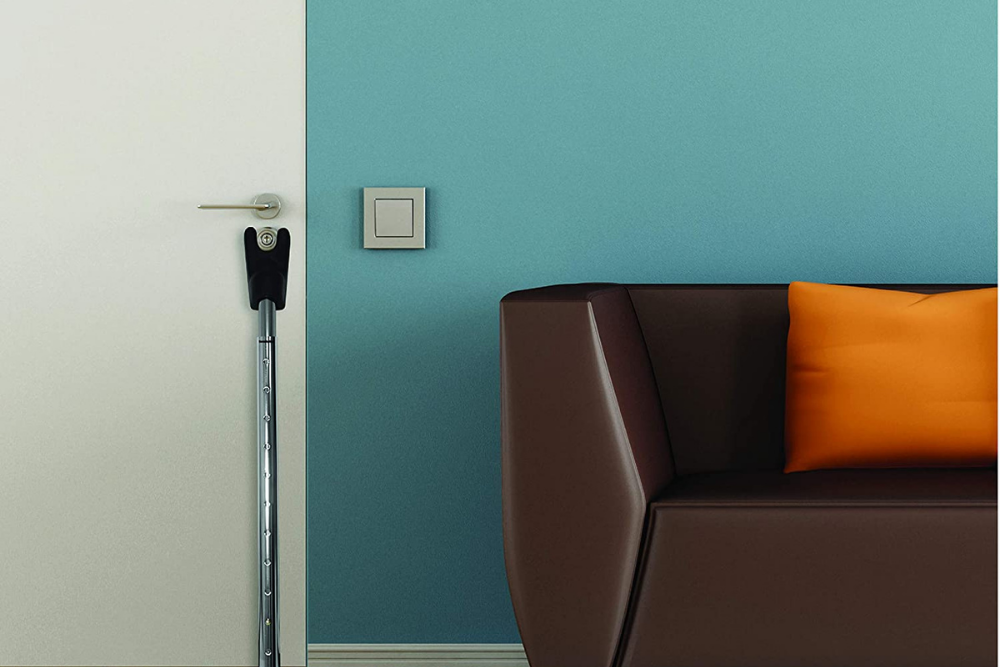
STEP 6: Protect your home even further by installing a home security system.
Each of these methods will make an outward-swinging door more secure, and a layered combination of them will result in a door that’s pretty impervious. However, one of the best ways to ensure the safety of all of the home’s access points is to install one of the best home security systems. The presence of a security camera and well-placed motion-sensing floodlights can make the home unappealing to potential burglars, and door- and window-opening sensors add the option of an alarm to alert the home’s residents that someone is attempting to break in. Choosing a professionally monitored system means a security attendant is keeping an eye on those sensors as well and can summon help promptly on your behalf in an emergency. Plus, a monitored alarm system may earn a significant discount on homeowners insurance policy premiums, potentially offsetting some of the costs of the security measures. Unlike the expensive full-service heavily equipped security systems of the past, contemporary home security companies have varied and customizable packages available for nearly every home and budget, and the best apartment security systems are often transferable and damage-free.
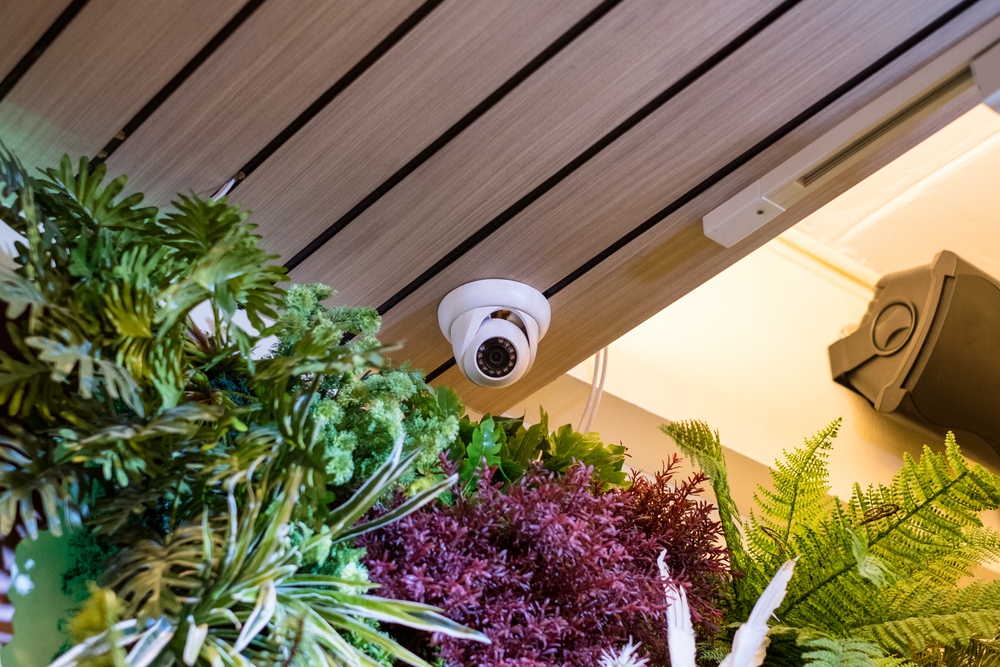
Outward-swinging doors do present a security challenge, but it’s a challenge that can be met with some creative solutions and the appropriate security tools. Using these measures to keep the door securely closed when not in use allows residents to enjoy the convenience of their door without worrying unnecessarily about the risk it could present to the home’s security.
